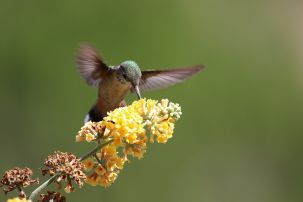Lesson summary
In this activity students get out into an ecosystem and record school yard biodiversity based on the sounds that they hear. The sounds can be recorded (e.g., on a tablet), or through drawings or brief explanatory notes. Students use their audio observation skills to identify the kind of activities occurring. They sort the sounds into natural and those are not natural. Students then interpret what they have heard as an indication of some aspects of the local biodiversity.
Learning intentions:
Students will...
- recognise there are a range of different native animals at their school.
- understand that animals can be identified through the audio observation skills.
- understand that there are a range of habitat types at their school.
Lesson guides and printables
Curriculum links
Select your curriculum from the options below.
Lesson details
Curriculum mapping
Australian curriculum content descriptions:
Science Year 1:
- Living things live in different places where their needs are met (ACSSU211)
- Science involves asking questions about, and describing changes in, objects and events (ACSHE021)
- People use science in their daily lives, including when caring for their environment and living things (ACSHE022)
Science Year 2:
- Living things grow, change and have offspring similar to themselves (ACSSU030)
- People use science in their daily lives, including when caring for their environment and living things (ACSHE035)
Science Year 3:
- Living things can be grouped on the basis of observable features and can be distinguished from non-living things (ACSSU044)
Science Year 4:
- Living things, including plants and animals, depend on each other and the environment to survive (ACSSU073)
- Science knowledge helps people to understand the effect of their actions (ACSHE062)
Cross curriculum priorities:
Sustainability – OI.1 – The biosphere is a dynamic system providing conditions that sustain life on Earth. O1.2 -All life forms, including human life, are connected through ecosystems on which they depend for their wellbeing and survival.
General capabilities: Critical and creative thinking
Syllabus Outcomes: ST1-4WS, ST1-9ES, ST1-10LW, ST1-11LW, ST2-10LW, ST2-11LW.
Connecting lessons: Biodiversity audit.
Resources required
- Outdoor habitat locations where students can sit undisturbed for a short period of time
- Clip boards
- Paper, pencils
- Camcorder or a sound reordering device, e.g., tablet (optional)
Additional info
NOTE: Although this activity has been created in support of the ResourceSmart AuSSI Vic program you will not meet the data goals of the program through this activity. This activity has been created to give younger students – for whom the official biodiversity audit would be too complex – an opportunity to participate in the biodiversity component of the ResourceSmart AuSSI Vic program. To gain accreditation your school will still need to complete the more complex biodiversity audit. Consider using the AuSSI Biodiversity Upper Primary Audit.


Welcome back!
Don't have an account yet?
Log in with:
Create your free Cool.org account.
Many of our resources are free, with an option to upgrade to Cool+ for premium content.
Already have an account?
Sign up with:
By signing up you accept Cool.org's Terms and Conditions(Opens in new tab) and Privacy Policy(Opens in new tab).